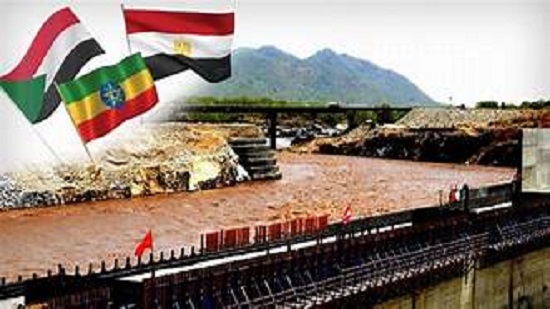Developments are accelerating as July approaches with the looming prospect of Ethiopia acting on its threat to start filling its Grand Ethiopian Renaissance Dam (GERD).
Last week Ethiopia replied in a manner consistent with the mode the Ethiopian government has followed for years to the memorandum that Egypt had submitted to the UN Security Council on 1 May. Addis Ababa continues to insist on its right to act unilaterally and remains indifferent to legitimate Egyptian and Sudanese concerns regarding the dam s engineering specifications, environmental and economic impacts, and the safety precautions that need to be put into place to avert catastrophe for downstream nations at some point in the future. The Egyptian memorandum to the 15-member Security Council, elevating its cause to a higher international level, expresses Egypt s frustration with Ethiopia s persistent refusal to conclude an agreement with Egypt and Sudan after US-mediated negotiations in Washington broke down earlier this year.
The UN must intervene constructively in this crisis that threatens the lives and wellbeing of the Sudanese and Egyptian people. Surely, the international organisation cannot sit on the sidelines and watch as Addis Ababa flouts international law and violates agreements that have been in operation for decades on the flimsy excuse that they were “concluded in the colonial era”.
The Ethiopian strategy to counter Egyptian-Sudanese coordination over this existential question for Egypt is inspired by an urge to assert complete and sole control over the Blue Nile, the source of most of the water that reaches Egypt. The nature of this strategy is evidenced by Addis Ababa s refusal to apply one of the most important principles of the Convention on the Law of Non-Navigational Uses of International Watercourses: the need for a country planning to utilise a transboundary watercourse to notify others sharing this watercourse of its plans in advance. In the event that the other countries believe the plan could cause them harm, the law requires the concerned parties to conclude a mutually acceptable agreement.
In 2011 Ethiopia laid the cornerstone of its GERD project and then kept to itself all the details concerning the engineering specifications, reservoir capacity and safety standards.
Once information on the envisaged dam began to leak, it emerged that the project would be much larger than Ethiopia had led others to believe. It turned out that GERD would be high enough to create a 74 billion m3 reservoir, or five times the 14 billion m3 capacity that had been approved in all previous European and US studies. Then, in the findings of the first international technical committee that was formed to study the specifications and potential impacts of the dam, it turned out that the electricity generating capacity factor of the planned hydropower plant was less than 30 per cent. Addis Ababa had billed GERD as the powerhouse of East Africa, capable of generating more than 6,000 megawatts. In fact, according to the scientists, production could not exceed 2,000 MW, which led many to ask what Addis Ababa s real motives were for building a dam of such an oversized scale.
The answer to this question is obvious. The dam is a means to control how much water flows to downstream countries under the pretext of the sovereign right to use domestic natural resources as Addis Ababa sees fit. It does not take international law experts to understand the antiquated and misleading nature of the Ethiopian argument. The Blue Nile is not a “domestic” resource but an international one shared by other countries along the same watercourse. These countries have rights upheld by international law, not least of which is the right to ensure that hydraulic projects planned by other countries will not cause them significant harm. This is why international law requires not just engineering studies at the envisioned construction site but also studies on the potential hydraulic, economic, social and environmental impacts on other countries in the same river basin. On the basis of such studies, appropriate measures can be taken in advance to safeguard the rights of all parties and mechanisms can be put in place to determine responsibility and exact compensation in the event harm of some sort does occur.
This is why the UN Watercourses Convention underscores the principles of prior notification and mutual agreement that Ethiopia has been so stubbornly blind to as though determined to live by the law of the jungle, heedless of the needs of others.
To round out its strategy, Ethiopia has persisted in its practices of deception and misinformation, and procrastination and evasiveness. For example, when faced with criticism of their unilateral actions, Ethiopian leaders protest, “we won t reduce the amount of water to Egypt by a single drop!”
That is for public consumption. Behind the scenes, in the negotiating chambers and elsewhere, they adopt a different style altogether as they haggle over just how much water they can divert and in how short a time. Then they drag out negotiations across endless rounds and stretch out the intervals between one round and the next in order to buy time until they present Egypt and Sudan with the next provocation or fait accompli.
It is because of such practices that the international community as embodied in the UN and the Security Council must step in quickly to resolve this crisis before it spirals out of control.
Egypt will not gamble with the lives of the Egyptian people.



